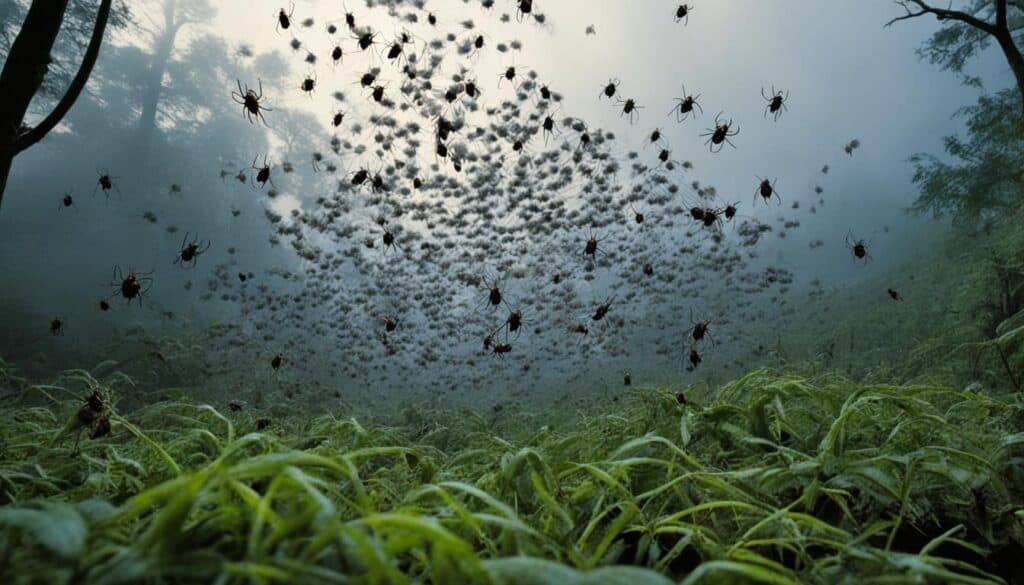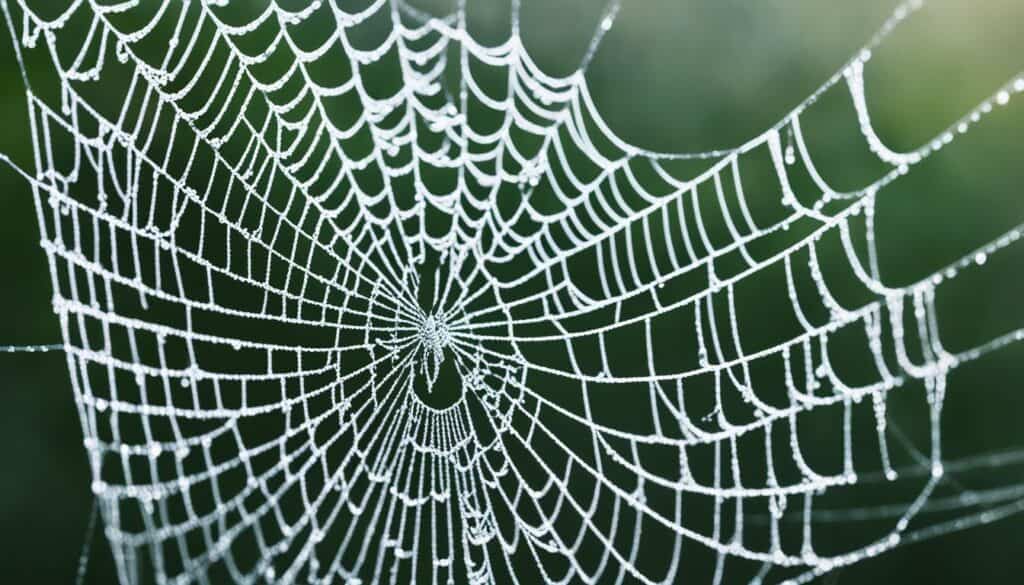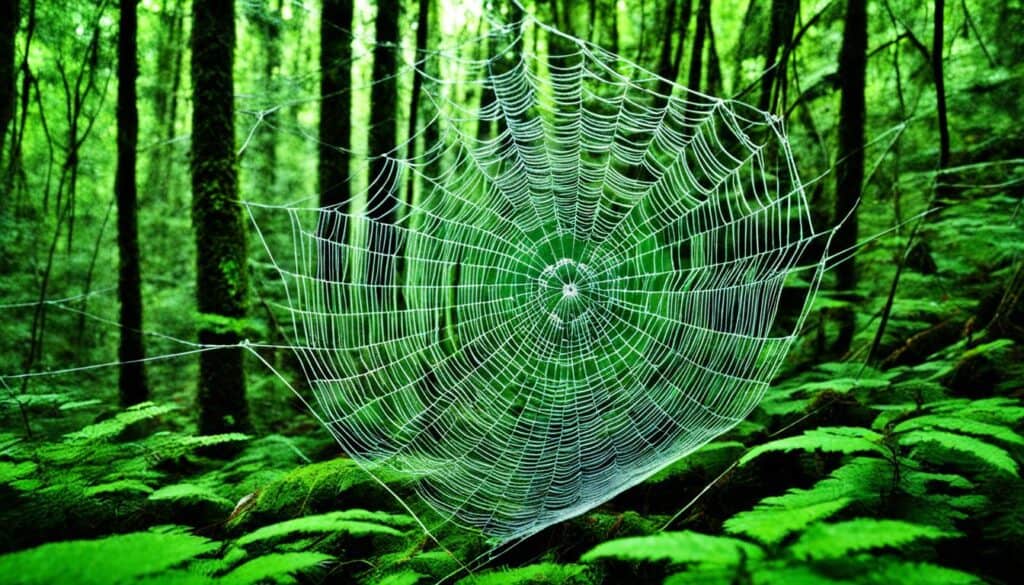Did you know Joro spiders can spin webs over 3 feet long? Imagine finding such a huge web in your backyard. These spiders are big, colored in black and yellow, and come from East Asia. They’ve traveled far to the United States. Despite their scary look, their venom is mild and safe for humans.
The Joro spider, originally from Japan, is heading north. It started in Georgia but is now moving towards places like New Jersey. People along the East Coast feel both amazed and scared. Yet, these spiders seem to fit well in cities. They pose no danger to humans or pets.
Key Takeaways
- Joro spiders can spin webs over 3 feet in length.
- These spiders have a leg-span up to 4 inches and are about the size of a mouse.
- Researchers assert they are harmless to both humans and pets.
- They possess a unique tolerance for urban vibrations and noise.
- Joro spiders originated from East Asia and are expanding rapidly in the U.S.
The Journey North: Joro Spider Invasion on the East Coast
In 2021, the Joro spider came from Japan to the Southeastern United States. Georgia became the main spot for these visitors. These spiders, known for their bright yellow and black bodies, both scare and interest people. Thanks to their ability to handle the climate, they are moving north into cooler areas.
Joro spiders are now seen more often, showing they’re spreading beyond the South. Their spread has increased efforts to monitor them. These spiders have a fast metabolism and heart rate, moving quicker than expected.
They can survive short freezes, giving them an edge over other spiders. Now, seeing them in my New Jersey backyard feels almost certain. Joro spiders have taken over much of Japan, where the climate is like ours. So, their spread here seems likely.
They have a special way of traveling on the wind, which helps them spread. Human movement also plays a part in their spread. From New York to Ohio, their numbers are growing. Experts think they’ll be common in the North soon.
Even though Joro spiders look scary, they’re not a big danger to humans or pets. But, they are changing local ecosystems. Their effect on other insects is worrying researchers. Their move north is being closely studied.
Joro Spider Habitat: Preferred Environments and Nesting Patterns
The Joro spider thrives in many settings. They do well in busy suburban and urban places. Their love for these areas is shown by the webs in my backyard.
In just eight years, Joro spiders have spread across 23 counties in Georgia. They like places that are calm and stable. They build large webs to catch various prey, showcasing their amazing web-making ability.
These spiders lay a lot of eggs in one go. An egg sac might have up to 1500 eggs. This ensures their numbers keep growing. They use a unique traveling method called ballooning to move to new locations.
My yard has fewer native spiders, like the yellow garden spider, because of the Joros. Experts are studying how Joro spiders change local ecosystems. It’s clear they’re becoming a permanent part of it.
Dealing with their growing numbers is both interesting and tough for me. Trying to control them by removing webs and squashing the spiders barely helps. It’s a mix of feeling impressed and overwhelmed.
Behavior and Adaptation of Joro Spiders
The Joro spider is quite the traveler, known for its ballooning skill. These spiders can go 50 to 100 miles, riding the wind. Experts say they might move from Georgia to Massachusetts in ten years.
Despite their big size, these spiders are not mean. They are shy, focusing on catching their prey rather than bothering people. They eat bugs that are often pests, helping control them around our homes.
Joro spiders make large, orb-weaver webs in trees, 6 to 10 feet up. Their web-making shows off their skill and how well they adapt to different places. They live well in both cities and suburbs, not bothered by people.
Their ability to adapt is amazing. They can handle cold weather due to their fast metabolism and cold resistance. But scientists worry they might harm local ecosystems. They fear Joro spiders could outcompete local spiders for food and space.
To sum it up, Joro spiders might seem like comic book characters because of their unique traits. They are just surviving and sticking to their diet of insects. As they spread, scientists will watch their effect on local environments. We hope they continue to help by eating pests without causing other problems!
Current Distribution and Sightings
Since spotting the first Joro spider in Georgia in 2013, sightings have exploded. I’ve met these spiders up close and can say they’re spreading fast. Studies indicate millions now live in the Southeast, moving 10 miles yearly without our help. And they’re getting closer to cities as per recent findings, which doesn’t help my sleep.
The spiders come from East Asia and seem eager to explore. They’re surviving cold weather, showing they can live from Maine to Florida. Their ability to adapt makes tracking their movements along the East Coast challenging.
Research on their effect on our environment is fascinating. The full impact is still unknown, but it’s key we learn about their role. They might overlap areas with pests like the spotted lanternfly. However, Joro spiders are gentle and don’t threaten us.
The rise in Joro spider sightings underlines the need to watch how we interact with nature. By tracking them, we learn about their impact on our surroundings. It’s an interesting yet eerie narrative of nature’s secrets.
Conclusion
Joro spiders are making a home in northern climates, which is both interesting and worrying. They’ve spread over 120,000 square kilometers by October 2022. States such as Georgia, South Carolina, and North Carolina have seen this spread. Their movement is partly natural and partly due to human actions.
This rapid growth could mean they’ll soon be all over the eastern U.S. The impact of Joro spiders on local ecosystems could be huge. They’ve been known to push out local species, worrying many about the future of our biodiversity. Though they are venomous, their bite doesn’t harm humans.
With approximately 50 spiders in every 94 yards in some areas, it feels like they’re everywhere. My backyard seems especially inviting to them now. Managing their numbers is challenging. Coyle believes we shouldn’t overreact but rather use simple tools like sticks or brooms for removal.
It’s important to find a balance in dealing with these spiders, ensuring they don’t harm our native wildlife. I’m preparing to coexist with them, although it feels odd. The key is to keep an eye on them without harming our ecosystem too much.
Research on Joro spiders will help us understand and live with them better. Handling invasive species in our own backyards requires science and patience. As we learn more, we’ll find better ways to maintain the balance with these new neighbors.




